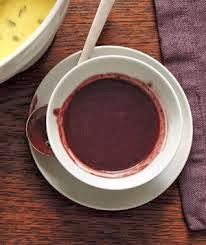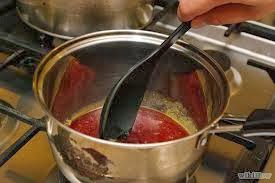 |
| Montreal, Beautiful anytime but especially in snow. |
To break my ethnicity down even further, I am a Quebecois from a family with roots in the province of Quebec going back five generations. We were Scottish immigrants, Anglos to be sure, and I hate to admit that I was the first generation of the five who actually learned French. My mother was hopeless in the language. Once, answering the salutation “Comment allez-vous, Madame” (How are you Madam) she answered “Combien” (How much?) instead of “Tres Bien” (Very well). My father was a quiet man which concealed his complete lack of any French language skills whatsoever. He, at least, had an excuse: He was born in Winnipeg. The French-speaking Quebecers put up with this language barrier for years and years. Then came the “Quiet Revolution” which was not so quiet and all about Frenchifying Quebec for future generations. This had great success in sending legions of all-English-speaking Quebecers out of the province in one enormous wave. The Bank of Montreal moved its headquarters to Toronto. My parents moved to Atlanta. In truth, I didn’t go back to Montreal for years and years. But when I did, I could not get enough of the place. Or its food.
 |
| Garde Manger, Warm and welcoming. |
It seemed only logical to take out the four Quebec chefs’ cookbooks to prepare our Canadian dinner. So I dutifully perused “The Art of Living according to Joe Beef, a cookbook of sorts” (Ten Speed Press 2011) and Martin Picard’s “Au Pied de Cochon” (Douglas and McIntyre 2006) and finally, Chuck Hughe’s own “Garde-Manger” (La Presse 2010). Garde Manger is the name of Chuck’s first restaurant in Old Montreal. Andrew and I had met the man himself at his second, “Le Bremner” and we have a lot of affection for him. Never mind that the edition of Garde Manger was in French, if I was going to cook Quebecois, I might as well cook in the language too. I got a huge charge out of doing so. And while there were plenty of things I really did want to sink my teeth into, I chose “Magret de Canard, Foie Gras, Sauce au Vin Rouge” You’ll note that there’s no Foie Gras in the finished dish. That would have really put it over the top. So out went the Foie Gras but on to the table went this amazingly rich dish with its crisp duck, its bed of duck-fat fried potatoes and mushrooms and its somewhat incongruous but nonetheless delicious slice of triple
crème cheese. I looked everywhere for the Riopelle de l’ile cheese never finding it. The cheese is named after a renowned Quebecois artist, Jean-Paul Riopelle, said to be all of Canada’s most important modern artist. For each 3 lbs of cheese sold, one dollar goes to a foundation that helps the children of Isle-au-Grues get a higher education. It is where the cheese is made and where Riopelle died in 2002 at the age of 79. I substituted the much more easily found Saint Andre which melts into the dish giving it a rich creaminess and flash of flavor.
The Red Wine Sauce in the original recipe was enough to stock Garde Manger, the restaurant, for weeks so I cut it back drastically and the amount here would have been quite enough for the four servings this dish serves. I cut the rest of the recipe in half too for the two of us. And because Chef Hughes gives you all kinds of permission to do so, I substituted Fava Beans for the Corn kernels in the original which Chuck uses in season. My only question would be: who would eat this rich and warming a dinner in corn season? If this looks complicated, it is not. There’s about 30 minutes of prep and an hour of cooking time. You get the wine sauce going, parboil the potatoes then using the duck fat from the breasts, you make a sauté of fingerlings, mushrooms and fava beans. These form the bed for the cheese and the duck breasts which you liberally lap with the sauce. It’s true comfort food and a perfect salute to Canada and the cold. Here is the recipe. A votre Sante!
For the duck breasts: Score the duck on the skin side. Remove the excess fat around the breast, and remove the tip, if desired. Sprinkle with salt and pepper.
Place the duck breast, skin-side down, in a room-temperature skillet with no oil. Set the skillet over medium-high heat and cook for 5 minutes. Pour off the duck fat and reserve. Transfer the skillet to the oven and cook until medium-rare, 8 to 10 minutes. Again, pour off the duck fat and reserve.
Let the duck breasts rest on a cutting board for about 5 minutes.
While the duck is cooking, heat the duck fat in a cast iron skillet and add the potatoes, cooking until they are golden brown. Add the mushrooms and the Fava Beans and cook for 5 minutes. Season the mixture with Salt and Freshly Ground Pepper. Sprinkle half the parsley and chives over the mixture and set aside.
Divide the Duck Fat Potato mixture into four portions. Ladle some of the Red Wine Sauce over the dish, reserving the rest to use once the duck tops the potato mushroom mixture.
Slice the duck breast and lay one atop each portion of potatoes and cheese. Nap with the Red Wine Sauce. Scatter the remaining chives and parsley over the top of the dish. Serve at once.
















